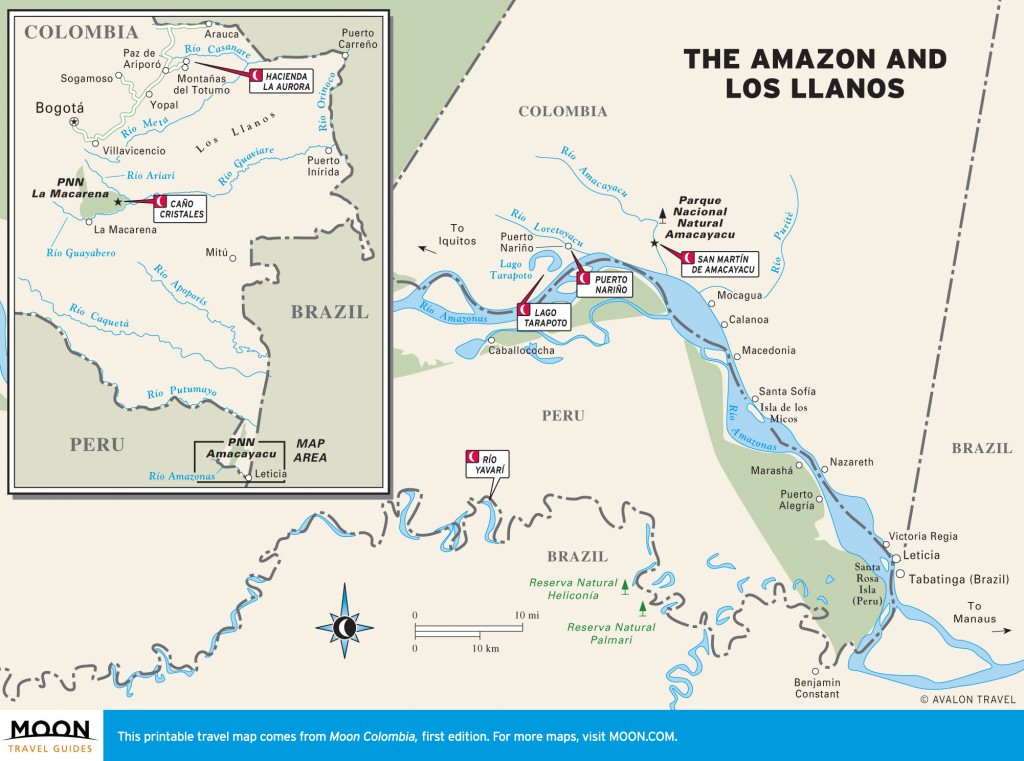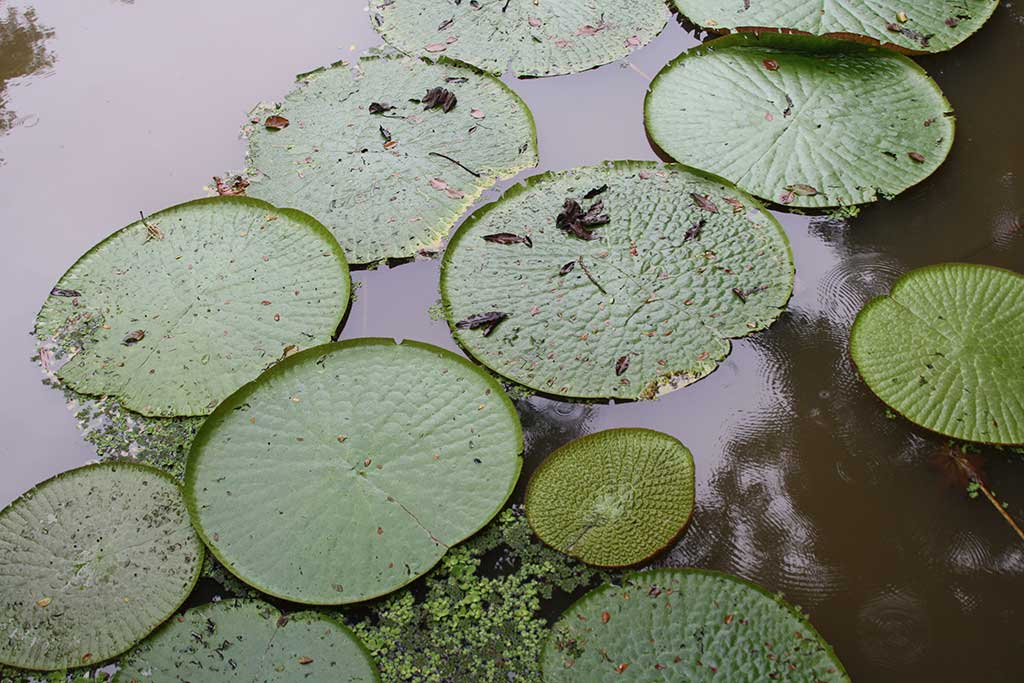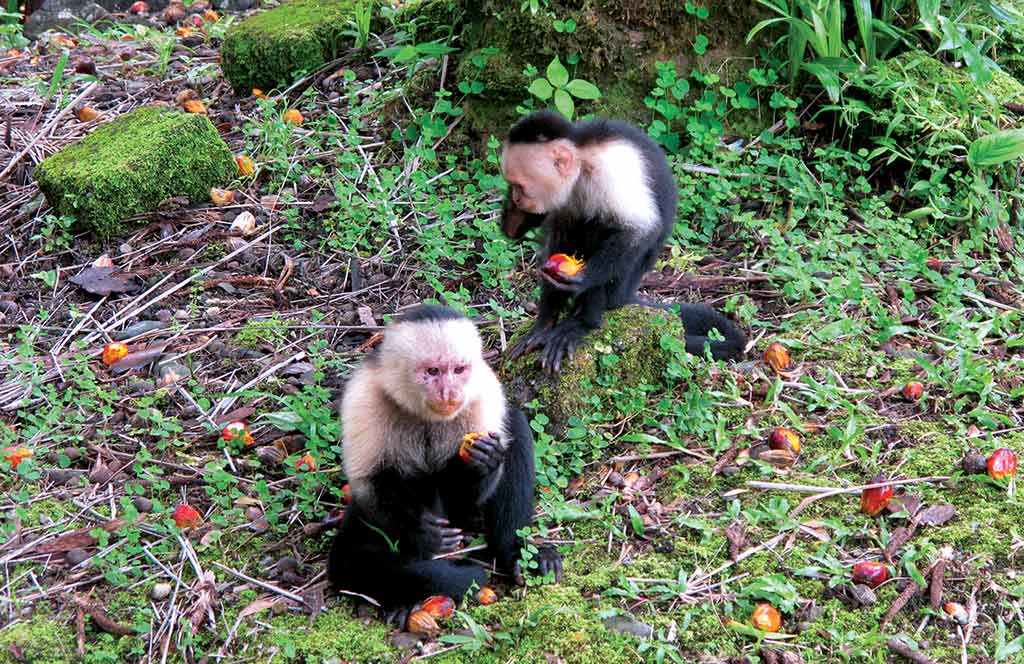Several sights provide excellent photo ops along the Río Amazonas westward from Leticia to the Parque Amacayacu. These are usually visited as part of a package one-day tour offered by all hotels and travel agencies. Most of these tours continue past Amacayacu to Puerto Nariño and the Lago Tarapoto. That is the easiest way to visit them, but it’s a rather “touristy” proposition.
When on the water, keep your eyes peeled for dolphins, both gray and pink, and pelicans above.For greater flexibility and to avoid feeling part of the herd you can also charter your own boat for around COP$300,000, but you’ll have to be specific about where you want to go in order to negotiate a good price. Head to the malecón (wharf) and ask any of the boat captains lingering about for this option.When on the water, keep your eyes peeled for dolphins, both gray and pink, and pelicans above. Every once in a while, you’ll pass a fisherman in a peque peque dugout canoe, just barely above water. When it rains you’ll see them furiously scooping out water with their hands so as not to sink!

The Amazon and Los Llanos
Seven kilometers (four miles) and about a 15-minute boat ride west from Leticia, Victoria Regia (COP$5,000 admission) is a private reserve that is usually the first stop on the river. You can view large circular Victoria amazonica lily pads and their lovely white lotus flowers floating atop the water. These are some of the largest water plants in the world, and the leaves can measure up to 1.5 meters (5 feet) in diameter, with roots extending 7 meters (23 feet) below the water’s surface. They say that these plants are so strong they can support the weight of a one-year old child. It’s not recommended, however, to test this theory on your offspring. You can also marvel at a magnificent old ceiba tree farther along on the park walkway. Ceibas are some of the tallest trees in the world. This is also your chance to get that quintessential Amazon photo with a colorful guacamaya (macaw) or two on your shoulders.

Lily pads at Victoria Regia. Photo © Andrew Dier.
On the Peruvian side of the river farther along is the community of Puerto Alegría. Here the attraction is exotic animals. When tourist boats show up at the community dozens of times each day, local women and children greet the tourists with all sorts of animals in hand: alligators, sloths, turtles. For a contribution you can be photographed holding several of the animals. Tourists are told that the animals are released into the wild after a period of time, but that seems hard to believe. Even if that is the case, they must have a hard time adjusting to their natural habitat after years in captivity, being held by humans day in and day out. You may find it disturbing how these creatures are used for human entertainment here.
The Isla de los Micos (Monkey Island) is the most popular tourist attraction on the river. It’s about 40 kilometers (25 miles) west of Leticia. At this island, owned by the Colombian hotel chain Decameron, elevated walkways meander through the jungle, and with just a morsel of fruit in your hand, you’ll make the monkeys go bananas. They’ll proceed to climb all over you in hopes of a snack, as if you were a tree. The monkeys are not native to the island, rather they were brought there by controversial hotel owner and entrepreneur Mike Tsalickis in the 1970s. Up to 12,000 supposedly lived there at one point. Some even were used for medical experiments. It is a tourist trap, but it’s hard to deny that kids love it.

Capuchin monkeys are cute–from a distance. Photo © Andrew Dier.
The Ticuna village of Macedonia is a regular stop for tourist boats. When visitors arrive, they are invited in to the maloca (community house), where an authentic ceremonial dance is performed. Tourists are led onto the middle of the dance floor to the beat of a turtle shell drum. Around the maloca you can peruse an array of handicrafts at stalls set up by local women. A specialty is palo de sangre wood carvings. Although touristy, it is nice that the community manages all the activities here, and all the income goes directly to them.
Tucked away on the bank of the Amazon, west of the Macedonia community and just before the community of Makagua and the Parque Nacional Natural Amacayacu, is Reserva Calanoa (Río Amazonas, 60 km/37 miles west of Leticia, cell tel. 311/842-4392, COP$230,000 pp). Most people speeding by in their boats do not notice it. That’s OK, because here the emphasis is on appreciation of the natural surroundings, of indigenous cultures, and learning: about art, photography, cooking, and flora and fauna. Activities offered (most are included in the overall price) include day and nighttime canoe trips, bird- and dolphin-watching, and canoe trips, by day and by night. It is a project of a Canadian-Colombian couple, Diego and Marlene Samper. Diego is an accomplished photographer. Calanoa offers one-of-a-kind tours, for example an annual workshop on natural fibers in February. During that week, participants learn the art of weaving palma de caraná leaves that form the stunning maloca rooftops that you have seen at every stop in the Amazon.
Reserva Calanoa has four beautifully done cabins made of all natural materials, and a lovely dining and relaxing area overlooks the river. The lodgings are called the Hotel de Selva. There is a strong emphasis here on working with and supporting neighboring indigenous communities, such as in the settlement of Mocagua, where Calanoa is undertaking a mural painting project in order to preserve and celebrate indigenous culture.
Excerpted from the First Edition of Moon Colombia.